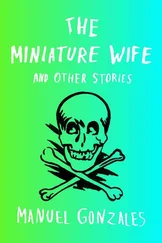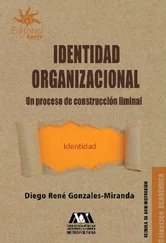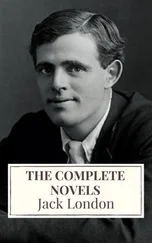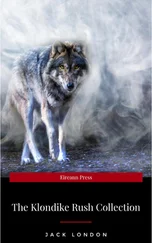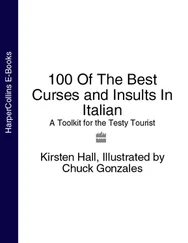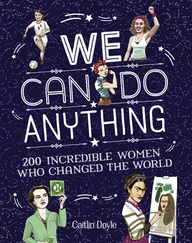Manoel Gonzales - London in 1731
Здесь есть возможность читать онлайн «Manoel Gonzales - London in 1731» — ознакомительный отрывок электронной книги совершенно бесплатно, а после прочтения отрывка купить полную версию. В некоторых случаях можно слушать аудио, скачать через торрент в формате fb2 и присутствует краткое содержание. Жанр: foreign_antique, foreign_prose, на английском языке. Описание произведения, (предисловие) а так же отзывы посетителей доступны на портале библиотеки ЛибКат.
- Название:London in 1731
- Автор:
- Жанр:
- Год:неизвестен
- ISBN:нет данных
- Рейтинг книги:5 / 5. Голосов: 1
-
Избранное:Добавить в избранное
- Отзывы:
-
Ваша оценка:
- 100
- 1
- 2
- 3
- 4
- 5
London in 1731: краткое содержание, описание и аннотация
Предлагаем к чтению аннотацию, описание, краткое содержание или предисловие (зависит от того, что написал сам автор книги «London in 1731»). Если вы не нашли необходимую информацию о книге — напишите в комментариях, мы постараемся отыскать её.
London in 1731 — читать онлайн ознакомительный отрывок
Ниже представлен текст книги, разбитый по страницам. Система сохранения места последней прочитанной страницы, позволяет с удобством читать онлайн бесплатно книгу «London in 1731», без необходимости каждый раз заново искать на чём Вы остановились. Поставьте закладку, и сможете в любой момент перейти на страницу, на которой закончили чтение.
Интервал:
Закладка:
The next office I shall mention is the Mint, where, at present, all the money in the kingdom is coined. This makes a considerable street in the Tower, wherein are apartments for the officers belonging to it. The principal officers are: – l. The warden, who receives the gold and silver bullion, and pays the full value for it, the charge being defrayed by a small duty on wines. 2. The master and worker, who takes the bullion from the warden, causes it to be melted, delivers it to the moneyers, and when it is minted receives it from them again. 3. The comptroller, who sees that the money be made according to the just assize, overlooks the officers and controls them. 4. The assay-master, who sees that the money be according to the standard of fineness. 5. The auditor, who takes the accounts, and makes them up. 6. The surveyor-general, who takes care that the fineness be not altered in the melting. And, 7, the weigher and teller.
The Jewel-office, where the regalia are reposited, stands near the east end of the Armoury. A list is usually given to those who come daily to see these curiosities in the Jewel-house, a copy whereof follows, viz.:
1. The imperial crown, which all the kings of England have been crowned with, ever since Edward the Confessor’s time.
2. The orb, or globe, held in the king’s left hand at the coronation; on the top of which is a jewel near an inch and half in height.
3. The royal sceptre with the cross, which has another jewel of great value under it.
4. The sceptre with the dove, being the emblem of peace.
5. St. Edward’s staff, all beaten gold, carried before the king at the coronation.
6. A rich salt-cellar of state, the figure of the Tower, used on the king’s table at the coronation.
7. Curtana, or the sword of mercy, borne between the two swords of justice, the spiritual and temporal, at the coronation.
8. A noble silver font, double gilt, that the kings and royal family were christened in.
9. A large silver fountain, presented to King Charles II. by the town of Plymouth.
10. Queen Anne’s diadem, or circlet which her majesty wore in proceeding to her coronation.
11. The coronation crown made for the late Queen Mary.
12. The rich crown of state that his majesty wears on his throne in parliament, in which is a large emerald seven inches round, a pearl the finest in the world, and a ruby of inestimable value.
13. A globe and sceptre made for the late Queen Mary.
14. An ivory sceptre with a dove, made for the late King James’s queen.
15. The golden spurs and the armillas that are worn at the coronation.
There is also an apartment in the Tower where noble prisoners used to be confined, but of late years some of less quality have been sent thither.
The Tower where the lions and other savage animals are kept is on the right hand, on the outside the ditch, as we enter the fortress. These consist of lions, leopards, tigers, eagles, vultures, and such other wild creatures as foreign princes or sea-officers have presented to the British kings and queens.
Not far from the Tower stands London Bridge. This bridge has nineteen arches besides the drawbridge, and is built with hewn stone, being one thousand two hundred feet in length, and seventy-four in breadth, whereof the houses built on each side take up twenty-seven feet, and the street between the houses twenty feet; there being only three vacancies about the middle of the bridge where there are no houses, but a low stone wall, with an iron palisade, through which is a fine view of the shipping and vessels in the river. This street over the bridge is as much thronged, and has as brisk a trade as any street in the city; and the perpetual passage of coaches and carriages makes it troublesome walking on it, there being no posts to keep off carriages as in other streets. The middle vacancy was left for a drawbridge, which used formerly to be drawn up when shipping passed that way; but no vessels come above the bridge at this day but such as can strike their masts, and pass under the arches. Four of the arches on the north side of the bridge are now taken up with mills and engines, that raise the water to a great height, for the supply of the city; this brings in a large revenue which, with the rents of the houses on the bridge, and other houses and lands that belong to it, are applied as far as is necessary to the repair of it by the officers appointed for that service, who are, a comptroller and two bridge-masters, with their subordinate officers; and in some years, it is said, not less than three thousand pounds are laid out in repairing and supporting this mighty fabric, though it be never suffered to run much to decay.
I come next to describe that circuit of ground which lies without the walls, but within the freedom and jurisdiction of the City of London. And this is bounded by a line which begins at Temple Bar, and extends itself by many turnings and windings through part of Shear Lane, Bell Yard, Chancery Lane, by the Rolls Liberty, &c., into Holborn, almost against Gray’s-Inn Lane, where there is a bar (consisting of posts, rails, and a chain) usually called Holborn Bars; from whence it passes with many turnings and windings by the south end of Brook Street, Furnival’s Inn, Leather Lane, the south end of Hatton Garden, Ely House, Field Lane, and Chick Lane, to the common sewer; then to Cow Cross, and so to Smithfield Bars; from whence it runs with several windings between Long Lane and Charterhouse Lane to Goswell Street, and so up that street northward to the Bars.
From these Bars in Goswell Street, where the manor of Finsbury begins, the line extends by Golden Lane to the posts and chain in Whitecross Street, and from thence to the posts and chain in Grub Street; and then runs through Ropemakers Alley to the posts and chain in the highway from Moorgate, and from thence by the north side of Moorfields; after which it runs northwards to Nortonfalgate, meeting with the bars in Bishopsgate Street, and from thence runs eastward into Spittlefields, abutting all along upon Nortonfalgate.
From Nortonfalgate it returns southwards by Spittlefields, and then south-east by Wentworth Street, to the bars in Whitechapel. From hence it inclines more southerly to the Little Minories and Goodman’s Fields: from whence it returns westward to the posts and chain in the Minories, and so on more westerly till it comes to London Wall, abutting on the Tower Liberty, and there it ends. The ground comprehended betwixt this line and the city wall contains about three hundred acres.
There is no wall or fence, as has been hinted already, to separate the freedom of the City from that part of the town which lies in the county of Middlesex, only posts and chains at certain places, and one gate at the west end of Fleet Street which goes by the name of Temple Bar.
This gate resembles a triumphal arch; it is built of hewn stone, each side being adorned with four pilasters, their entablature, and an arched pediment of the Corinthian order. The intercolumns are niches replenished; those within the Bar towards the east, with the figures of King James I. and his queen; and those without the Bar, with the figures of King Charles I. and King Charles II. It is encircled also with cornucopias, and has two large cartouches by way of supporters to the whole; and on the inside of the gate is the following inscription, viz., “Erected in the year 1671, Sir Samuel Starling, Mayor: continued in the year 1670, Sir Richard Ford, Lord Mayor: and finished in the year 1672, Sir George Waterman, Lord Mayor.”
The city is divided into twenty-six wards or governments, each having its peculiar officers, as alderman, common council, &c. But all are subject to the lord mayor, the supreme magistrate of this great metropolis. Of each of these wards take the following account.
Читать дальшеИнтервал:
Закладка:
Похожие книги на «London in 1731»
Представляем Вашему вниманию похожие книги на «London in 1731» списком для выбора. Мы отобрали схожую по названию и смыслу литературу в надежде предоставить читателям больше вариантов отыскать новые, интересные, ещё непрочитанные произведения.
Обсуждение, отзывы о книге «London in 1731» и просто собственные мнения читателей. Оставьте ваши комментарии, напишите, что Вы думаете о произведении, его смысле или главных героях. Укажите что конкретно понравилось, а что нет, и почему Вы так считаете.


